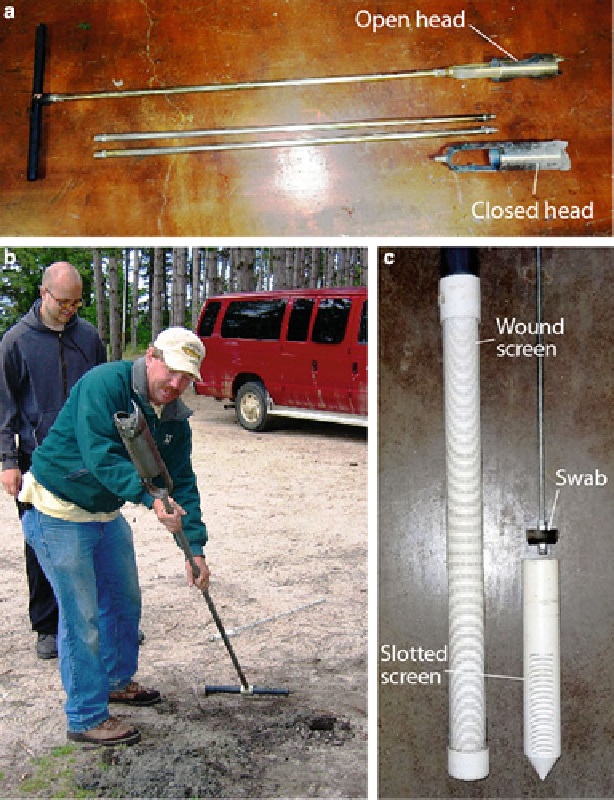Environmental Engineering Reference
In-Depth Information
Fig. 3.42 Hand auger for removing sediment prior to installation of a water-table monitoring
well. (a) Auger head, rod, and handle with two rod extensions and an additional auger head; (b)
Augering a hole with the bucket inverted for removal of sediment; (c) PVC wound well screen,
PVC slotted well screen, and well-screen swab. Note the two different types of fittings at the end of
the well screen (standard PVC cap and cone-shaped PVC point). If the slotted screen is inverted
and the cap is attached to the opposite end, the non-slotted interval becomes the sump
common solution to this problem is persistence. Keep augering through this sedi-
ment with strong downward force on the auger handle. You may need to change to
an auger head that has solid sides and a narrower opening between the cutting fins
so that loose, wet sand is better retained when the auger is pulled from the hole. The
hole below the water table will gradually deepen as you continue to remove
sediment and the loose slurry occupying the hole will become less and less dense

